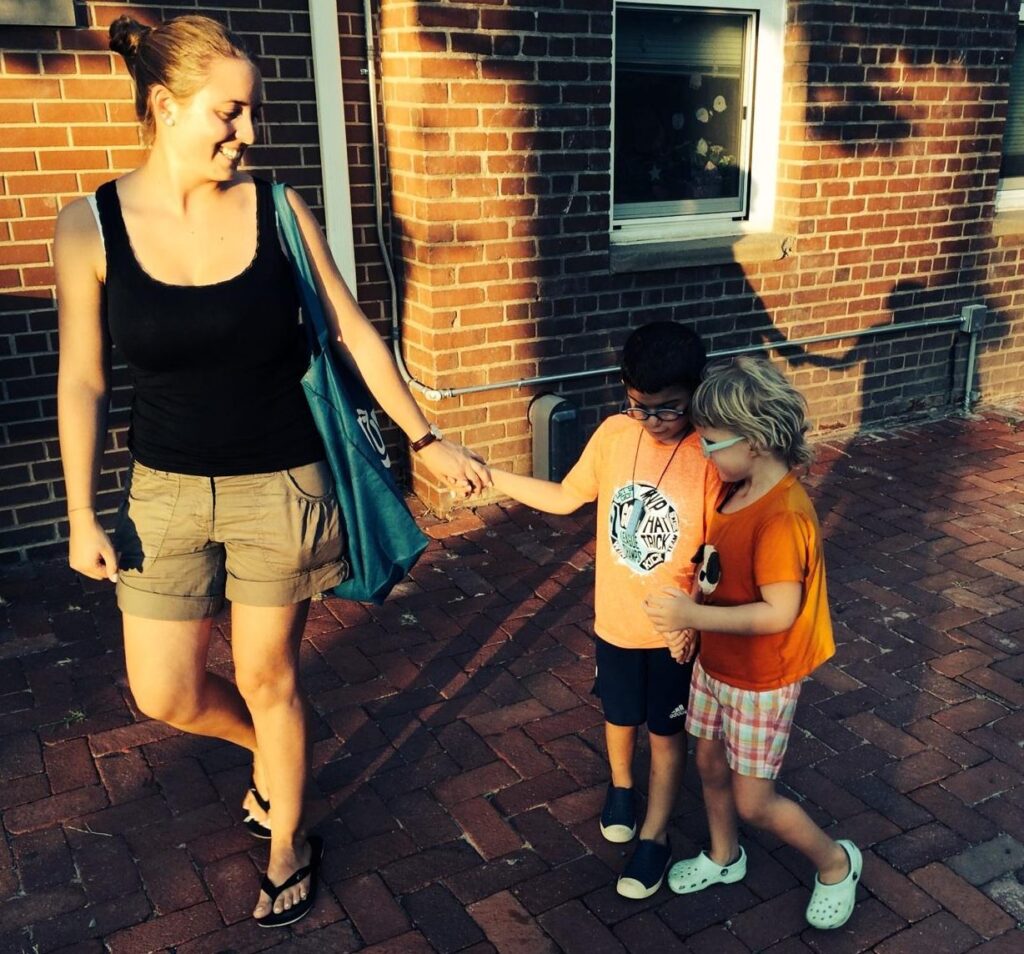
The other day I was with Oona at a playground next to the woods of Sligo Creek. It was dusk and no one else was out… just us, the snow on the ground from Friday, and the creek gurgling in the background. For some reason I suddenly had very clear thoughts on why I sign with my kid – and why I insist that she be in a sign language education environment – even when she doesn’t sign back.
Thankfully, since my kid has been in a sign language program for years, I rarely have to explain this. Most teachers and aides who work with deaf kids in ASL immersion classrooms are awesome and fully believe that any deaf child has the right to be immersed in sign language, even when their disabilities and developmental differences cause them to sign less than their peers.
However, if your kid is in a public school Deaf program, then you probably had to deal with an assortment of administrators and ‘specialists’ that have no background in Deaf education. Some might have said to your face that your child needs to be in a generic special education classroom, not the Deaf & Hard of Hearing Program, even though that would mean zero language access and certainly no language community.
Other times I am not SURE, but I just get this feeling from someone, that they are thinking “why is the kid not signing back?” Or “why are the parents signing so much and the kid does not seem to be signing at all?” Sometimes well-meaning hearing families who don’t know us well express interest in hanging out and learning sign language (“your kid can teach our kids sign language!”) and I am put in the awkward position of trying to explain that my kid just uses about 20 signs, and oftentimes erratically.
The point is that, just because someone has limited expressive communication, that does not mean that their receptive communication is equally limited. Oona understands way more than she signs. And when she does not fully understand what we sign, she is incrementally learning more signs through context. This is how language works. Again, just because someone has limited expressive communication does not mean that their receptive communication somehow stops existing or stops following the usual trajectories of language acquisition. That may be the case, but it should not be assumed. Every kid is different.
And finally, last but certainly not least, I want to make a point about communication in general. Communication is not just simple transmission of information. Communication between parents and children is an emotional support structure. An act of communication is an act of reassurance. It represents a willingness, an effort, to bridge your world to your child’s world. It shows that you care, even when your child can’t compute all of the information contained in that act of communication. They feel included.
However, if your child can’t even tell that you are communicating, then the opposite effect will take place: they will feel isolated and emotionally unsupported. This is the basic reason why hearing parents need to learn how to sign with their deaf & hard of hearing children immediately, and why it doesn’t matter if your ASL is imperfect. You are performing the far greater feat of showing your child that you care and you want to communicate. You are establishing an emotional bedrock of trust and inclusion. You can work your way through the grammar lessons later when they start school.
I see no reason why this logic would operate any differently for deaf children (and adults, for that matter) who are developmentally unable to use the same range of expressive sign language as the majority of their deaf peers. Do they not have emotions? Do they not seek inclusion, affirmation, and reassurance just like the rest of us? If the answer is yes, and if you agree that the natural (most accessible) language for deaf & hard of hearing people is sign (whether visual or tactile), then the obvious imperative is to keep signing.
We supported hiring a Deaf intervener for Oona – even if that person would likely be non-oral – because the modality of sign language (visual/tactile) is way more accessible to her than spoken language, and therefore the emotional benefits of her communication experience are also way more accessible.
To put it simply: We keep signing with Oona because it makes her happy.

You and Oona and this blog make me happy.